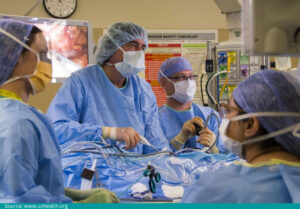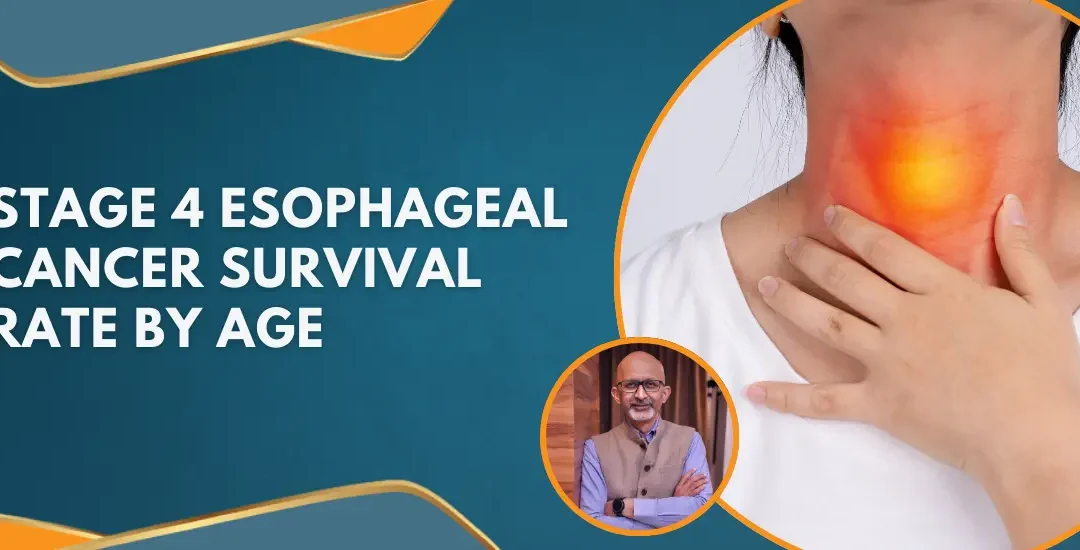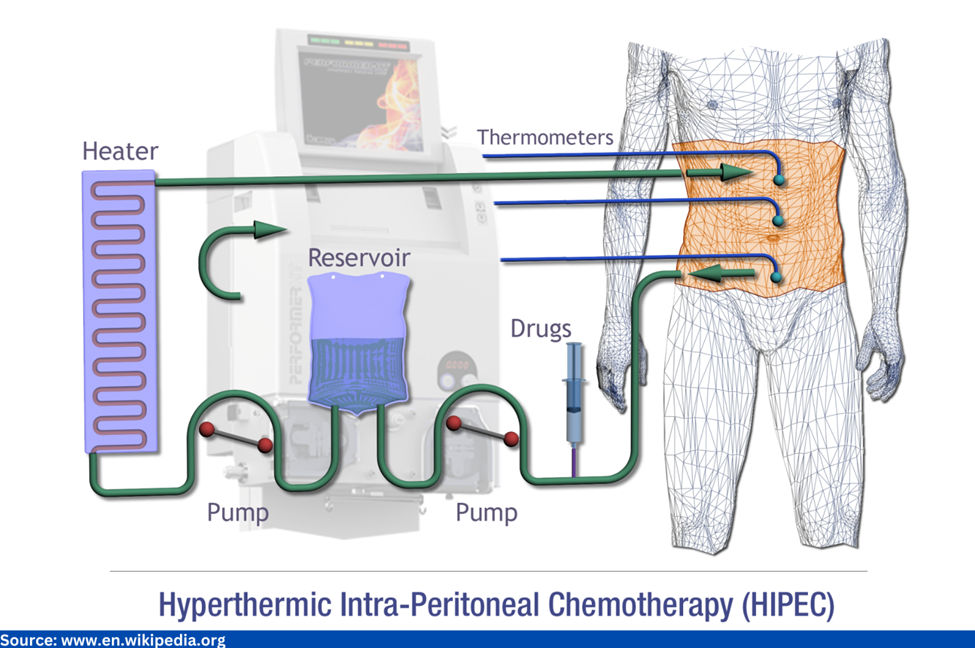
Cancer Treatment – Laparoscopic VS Robotic Surgery
Decades ago, open surgery was the standard of care, when a surgeon made an incision in the body of the patient and then performed a series of procedures to remove benign (non-cancerous) or malignant (cancerous) tumors. The process took too long and usually resulted in a high frequency of complications. However, minimally invasive techniques like laparoscopic and robotic surgery can now be used to conduct cancer surgery.
Minimally invasive surgery has become increasingly popular in the last two decades. These approaches involve introducing a camera through a keyhole (tiny) incision in order to reach any significant target organ or the cancer site.
These procedures are less uncomfortable and less likely to result in problems.
The benefits are enormous when the incisions are small, explains Dr. Sandeep Nayak, a well-known surgical oncologist in India.
In this article, we shall learn the similarities and differences between these two surgical methods.

How are Laparoscopic and Robotic Surgeries similar?
There are several similarities between robotic surgery and laparoscopic surgery. The most significant similarities include the following:
- Both techniques use smaller incisions than a traditional open surgery
- Both procedures involve the use of tiny cameras to get a better view of the surgical area
- The surgical instruments used in both these procedures are much smaller
However, robotic surgery has made technological strides that make these operations simpler for doctors to carry out and for the patients to recuperate from.
What are the differences between Laparoscopic and Robotic Surgery?

Laparoscopic Surgery
Laparoscopic surgery involves performing surgery by making keyhole, minimally invasive incisions in the abdominal (tummy) wall. The procedure is carried out using a laparoscope, a hand-held tool that aids the laparoscopic surgeon in navigating the body.
The camera used in Laparoscopic surgery is 2-dimensional.
It is employed to treat a number of ailments, including but not restricted to ovarian cysts, hernias, and numerous cancers.
Laparoscopic Surgery – Advantages
- lowers the potential for injury while performing the surgery
- the pain and discomfort during the healing period are less
- requires a shorter stay in the hospital
- the need for anesthetic drugs is reduced
- the risk of wound complications and infections is reduced
- blood loss is less, and recovery is quicker
- minimal discomfort and pain
- enables patients to resume routine activities soon
- the cosmetic results are better
Please get in touch with Dr. Sandeep Nayak if you want more information about Laparoscopic cancer surgery in India.
Robotic Surgery
Robotic surgery, also referred to as robot-assisted surgery, allows medical professionals to perform a multitude of intricate and challenging treatments with greater precision, flexibility, and command than is feasible with traditional methods.
This technique allows the surgeon to operate the surgical instruments from outside the body of the patient with the help of a console and a 3-dimensional camera. It enables surgeons to see clearly within the body, allowing them to do surgery without endangering a patient’s vital health tissues or organs.
Robotic surgery is an option for many challenging surgical operations, including prostate cancer surgery, liver transplantation, and heart bypass surgery. Robotic surgery helps with efficiency, precision, and command throughout a procedure. For patients, robotic surgery offers some benefits similar to those of laparoscopic surgery.
However, there are some clear advantages that you should take into account while selecting your course of treatment.
Robotic Surgery – Advantages
- provides a greater range of motion
- the 3-dimensional camera allows a better view of the operation site
- causes minimal blood loss, and recovery is quicker
- there is precision in the movements as surgeon tremor is eliminated
- the instruments are intricate and can access areas that a surgeon’s hand cannot reach in traditional or laparoscopic surgery
- reduced need for anesthetics during and after surgery
Dr. Sandeep Nayak adds that Robotic surgery typically results in less discomfort, reduced complications, and a speedier recovery period for the patient since it allows the surgeon a precise and clear perspective of the surgery site and improved dexterity.
With over 23 years of overall experience, Dr. Sandeep Nayak is among the preferred cancer specialists for people seeking Robotic Cancer Surgery in Bangalore, India.
Which is a better cancer treatment – Laparoscopic or Robotic surgery?

Which cancer surgery is best depends on several variables, including the health status of the patient, the surgeon’s preferences and surgical experience, the kind of cancer that needs treatment, time restraints, and available amenities and technology.
Laparoscopic surgery appeals to patients because it requires fewer incisions and causes less discomfort. On the other hand, robotic surgery additionally offers improved visualization and precision in the operating room with fewer difficulties.
Cancer specialist Dr. Sandeep Nayak adds that Robotic surgery is typically preferred when a surgeon must operate in a challenging, constrained area of the body.
Furthermore, robotic surgery has a quicker recovery period and is a less invasive choice for patients who are uncomfortable with the thought of surgery. Although less invasive, laparoscopic surgery takes longer to complete.
If you are considering getting cancer treatment in Bangalore, please consult Dr. Sandeep Nayak to understand which treatment option is the most suitable for you.
Conclusion

However, with progress in medical science, treatment options are becoming more advanced with minimal side effects or discomfort. Laparoscopic and Robotic Surgery are both minimally invasive techniques that enable precise surgeries with the quickest recovery time, but there are a few significant variations between them.
It is significant to highlight that both of these procedures are generally very successful. So, do not be concerned about the surgical choice you or your doctors decide on.
Please do not delay the process if you or a loved one requires cancer treatment; start your treatment with the accomplished surgical oncologist Dr. Sandeep Nayak. He is a pioneer in the field of minimally invasive surgeries and has saved the lives of countless people with his surgical expertise.
FAQs
Q. Is robotic surgery the same as laparoscopic?
A. A two-dimensional camera is used to aid with manual laparoscopic surgery. Meanwhile, in robotic surgery, the surgeon must use a console and a three-dimensional camera to manipulate equipment from outside the patient’s body.
Q. what are the advantages of robotic surgery?
A. The ability to perform surgery through tiny incisions is one of its key benefits. Among the additional benefits of robotic surgery are: Greater accuracy: Compared to a human hand, the robotic arm’s actions are more precise. They also have a wider range of motion.



 Dr. Sandeep Nayak, an acclaimed
Dr. Sandeep Nayak, an acclaimed  Head and neck cancer
Head and neck cancer Thyroid cancer
Thyroid cancer







 Dr. Sandeep Nayak, an experienced
Dr. Sandeep Nayak, an experienced  They include:
They include:
 According to research, ovarian cancer risk is up to 50% lower among women who have used oral contraceptives in the past. The risk of developing ovarian cancer decreases with continued use of the pill.
According to research, ovarian cancer risk is up to 50% lower among women who have used oral contraceptives in the past. The risk of developing ovarian cancer decreases with continued use of the pill.
